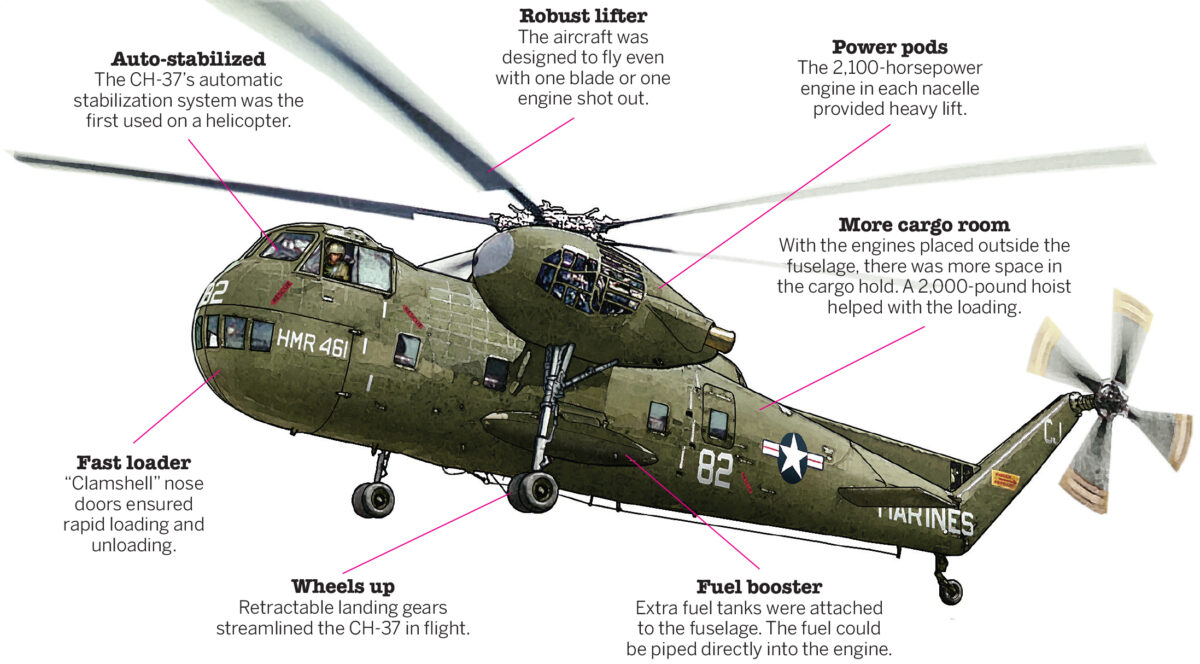On June 3, 1963, the first four U.S. Army CH-37B Mojave helicopters arrived in Saigon, followed in September 1965 by a detachment of eight CH-37Bs that deployed to Monkey Mountain, near Da Nang. The Marine Corps also flew the CH-37 in Vietnam, its version designated the CH-37C Deuce. Designed to fly even with the loss of a rotor blade or one of its engines, the aircraft was a robust but complicated machine to operate.
Aircraft-maker Sikorsky’s first twin-engine rotary wing craft, the CH-37 was proposed as a heavy assault helicopter for the Marines. It first flew in 1953 and was the Western world’s best heavy-lift copter until the introduction of the CH-47 Chinook in 1961. The CH-37’s engines were housed in external pods, or “nacelles,” to maximize cargo space. The nacelles also held retractable landing gear and fuel tanks, which had the unfortunate tendency to ignite in a crash. Other novel features included a hydraulic blade-folding system and automatic stabilization equipment, both firsts for a helicopter.
Troops and cargo entered the helicopter through clamshell doors on the nose. The cargo bay could hold a 105 mm howitzer or up to three M442 “Mighty Mite” trucks. The CH-37 also had a cargo hoist that could lift 2,000 pounds up through a hatch in the cargo bay floor.
Deliveries to both the Army and Marines began in 1956 and ended by 1960. All received upgraded engines, crash-proof fuel cells and improved auto-stabilization equipment by 1963. Even so, the CH-37 proved difficult to fly and maintain, quickly giving way to simpler, more powerful gas-turbine engine designs. They were replaced by CH-54 Tarhe Skycranes in the Army, beginning in 1965, and by CH-53 Sea Stallions in the Marines, starting in 1967.
Only three were lost in Vietnam—noteworthy, considering that the Marines’ eight CH-37s participated in more than 1,500 missions, hauling more than 5,700 tons of cargo and 31,000 passengers without accident. Army CH-37s are credited with recovering more than $7.5 million in damaged helicopters and aircraft. The last CH-37s departed Vietnam by 1969, and all were retired from military service by 1974.
This article appeared in Vietnam magazine’s February 2020 issue.

